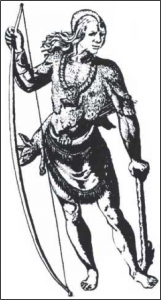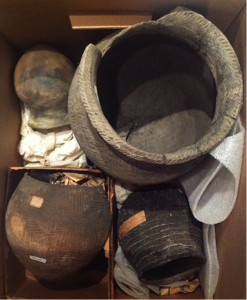The history of the Susquehannock Indians begins with their migration from Southern New York down the Susquehanna River looking for trade and ends with their demise in Lancaster County, Pennsylvania. Along the way, they gained the reputation of being giants, cannibals, and traders, along with killing other native groups they came into contact with.
My Ford summer research project with Dr. April Beisaw in the anthropology department and Michael Carraher, a geography major, focused on reinterpreting the history of the Susquehannock. We started with the questions 1) How did the Susquehannock react to a changing social environment?, and 2) How was this is reflected in their artifacts. In addition to reading site reports and papers about the Susquehannock, we took trips to museum archives and historical societies in Massachusetts, Pennsylvania, Washington D.C., and New York to examine artifacts found at sites linked to the Susquehannock.
I was specifically interested in the ceramic artifacts. When it comes to ceramics, there are specific design elements, such as overall vessel shape and decorative patterns, that can be examined to see patterns of interaction and cultural change.
Re-analyzing Susquehannock pottery with new social theory regarding how such artifacts reflect changing identity allowed us to remove previous biases inherent in the old story of the Susquehannock. It was a challenge to separate previous interpretations from my own data and create new understandings about a group of people based solely on objects. It was especially difficult to re-examine artifacts that have already been given a name and place within Susquehannock history.
Our research this summer is part of a new story about the Susquehannock that does not involve giants, cannibals, or murderers. It is a story about cultural adaptation and transformation in reaction to social and environmental change. More research and data analysis will be done in the future to further test this interpretation.
Sarah Mincer


